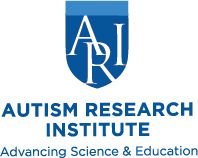Aarti Nair, Ph.D., is a postdoctoral fellow with the UCLA Ahmanson-Lovelace Brain Mapping Center and the UCLA PEERS® Clinic at the Semel Institute for Neuroscience and Human Behavior. At the PEERS® Clinic, Dr. Nair co-facilitates the PEERS® for Preschoolers social skills training groups. She is also a clinical neuropsychology fellow in the Medical Psychology Assessment Center (MPAC) at the UCLA Semel Institute for Neuroscience and Human Behavior.
Take the knowledge quiz
Can’t see the quiz below? Take it online HERE
The Science of Making Friends for Autistic Youth: Lessons from the UCLA PEERS Program
Free webinar at 5 p.m. Eastern time (US), Wednesday August 28, 2024 Learn research updates on evidence-based strategies to support adolescents and young adults develop social skills that encourage lasting friendships.
Study finds that employees with autism are less likely to exhibit “bystander” effect
Employees with autism spectrum disorders (ASD) may contribute to businesses in a unique way because they are less likely than neurotypical individuals to exhibit the “bystander” effect, according to a new study.
Autistic adults show enhanced generosity toward strangers
Adults with autism spectrum disorders (ASD) tend to be more generous to strangers than their neurotypical peers are, according to new research. In the study, Paul Forbes and colleagues explored differences
Contextual clues can trip up individuals with ASD
Adolescents with autism spectrum disorders (ASD) may have difficulty understanding other people’s emotions because they do not use contextual clues, a new study suggests. The study, by Steven Stagg and colleagues, compared
Observers may incorrectly rate people with ASD as being less truthful
Adults with autism spectrum disorders (ASD) may be incorrectly perceived by other people as being deceptive and lacking credibility, according to a new study. Alliyza Lim and colleagues asked 30 individuals with
Social Skills and ASD
Jed Baker, PhD presents strategies for lowering anxiety and helping individuals with ASD confront their fears while increasing social skills. Handouts in PDF format are available for download








